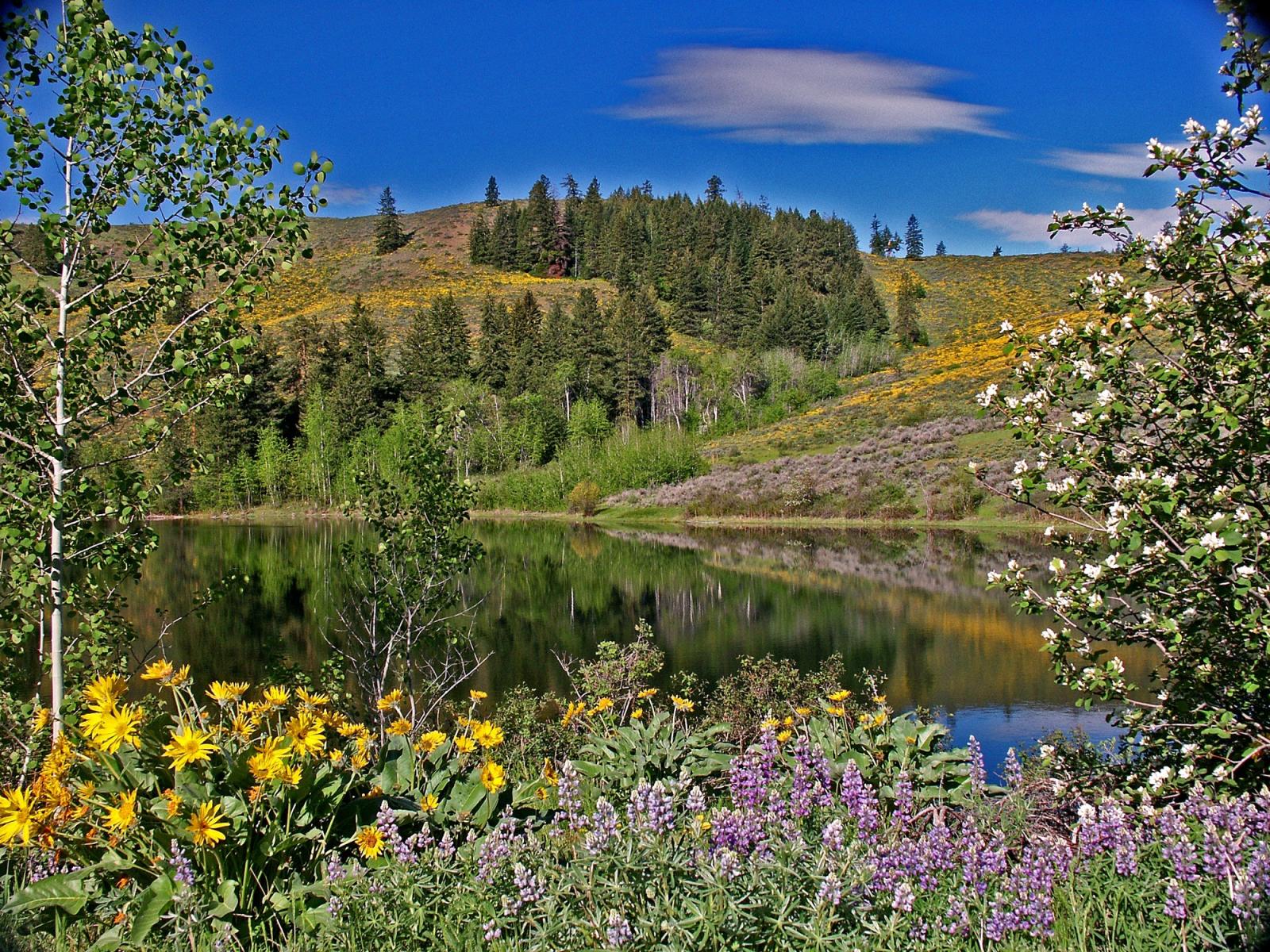
The Big Buck Unit is to the north and west of the confluence of the Twisp and Methow rivers, just northwest of Twisp. This area includes Pondosa pine and Douglas-fir forests and open shrubsteppe. Deadhorse, Shaw and Aspen lakes and Peters Puddles, offer key habitat for biodiversity. This unit was primarily purchased for mule deer migration corridors, providing spring and fall range for deer moving to and from summer ranges in the Twisp River drainage and the Sawtooth Wilderness.
The Big Buck Unit is located about 1 mile northwest of Twisp, northwest of the confluence of the Twisp and Methow Rivers, in Okanogan County. The unit can be accessed from both Frost Road and Elbow Coulee Road, off of Twisp River Road.
The Big Buck Unit lies within Methow River watershed. The area is bordered on the west by U.S. Forest Service and Department of Natural Resources land, and on the north, east and south by private land.
This unit is part of the Methow Wildlife Area.
Game Management Units: 242, 231
Getting there
Maps and directions to WDFW-managed access points for this unit. Opens Google Maps in a new tab.
Recreation and public access
A Discover Pass is required on WDFW lands -- including water access areas, wildlife areas, and campgrounds -- unless you already have a Vehicle Access Pass issued with the purchase of an eligible hunting or fishing license. Recreate responsibly on public lands: please know the Public Conduct Rules.
Public facility information:
- Parking is off of Frost Road, near the south end of Big Buck Lake (also called Shaw Lake or Frost Lake)
- No restroom
Hunting
On this unit, hunters may find opportunities to harvest black bear, cougar, deer, waterfowl, Eurasian collared dove, forest grouse, gray (Hungarian) partridge, moose, mourning dove, quail, small game, and turkey.
Fishing
Aspen Lake and Shaw Lake provides fishing opportunities on this unit.
Wildlife viewing
This unit includes Ponderosa pine and Douglas-fir forest, open shrubsteppe, and riparian habitats, offering opportunities to view a variety of wildlife, including mule deer.
Mule deer may be seen primarily in spring and fall as they migrate to and from summer ranges in the Twisp River drainage and the Sawtooth Wilderness.
Search for potential birding opportunities on or near a wildlife area unit by using eBird Northwest, a citizen science database portal that provides freely-shared bird lists at 'hotspots' and interactive maps plus other birding information updated daily.
Conservation
Habitats and vegetation vary from heavily timbered areas (Ponderosa pine and Douglas-fir) on the north facing aspects, to open shrub steppe (bitterbrush, sagebrush, and bunch grasses) on the south and east facing slopes. Riparian vegetation dominates around lakes, ponds and streams. Key habitat for biodiversity includes Deadhorse, Shaw and Aspen lakes and Peters Puddles.
Special habitats and species
Although some mule deer winter here, this area provides important migration corridors for deer migrating from summer ranges in the Twisp River drainage and the Sawtooth Wilderness.
Conservation goals
- Create, restore, and enhance a mosaic of habitat
- Maintain and restore native plant communities
- Manage for species diversity including game and nongame species
- Manage mule deer winter range corridors
Although some mule deer winter here, this area provides important migration corridors for deer migrating from summer ranges in the Twisp River drainage and the Sawtooth Wilderness.
- Create, restore, and enhance a mosaic of habitat
- Maintain and restore native plant communities
- Manage for species diversity including game and nongame species
- Manage mule deer winter range corridors
Land stewardship
The Big Buck Unit was primarily purchased for mule deer migration corridors.
Acquisition history
The parcels making up this area were purchased between 1975 and 2021.
| Funder | Fund |
|---|---|
| US National Park Service | Land and Water Conservation Fund |
| WA Dept of Fish and Wildlife | WDFW Game Fund (now Wildlife Fund) |
| WA Recreation and Conservation Office | State Bond Account |
| WA Recreation and Conservation Office | Washington Wildlife and Recreation Program |
Management planning
2006 Methow Wildlife Area Management Plan
Every eight to 10 years, the Washington Department of Fish and Wildlife (WDFW) revises management plans for each of its 33 wildlife areas to document current conditions, address new agency initiatives, and identify new management priorities and actions. In between those major revisions, WDFW updates plans every two years to outline short-term objectives and accomplishments. In 2014, WDFW began the process of updating existing plans, many of which were written in 2006. The new plans are being developed with significant public participation and input.